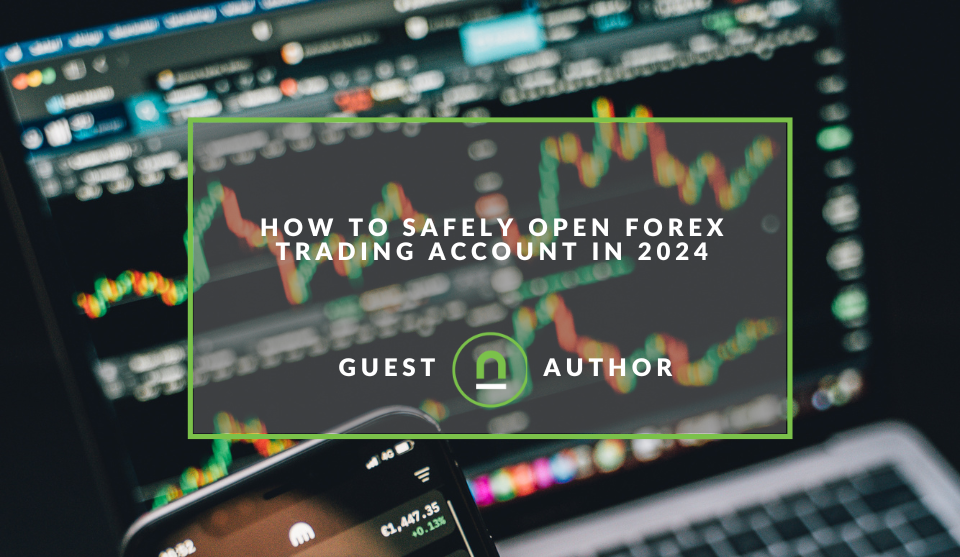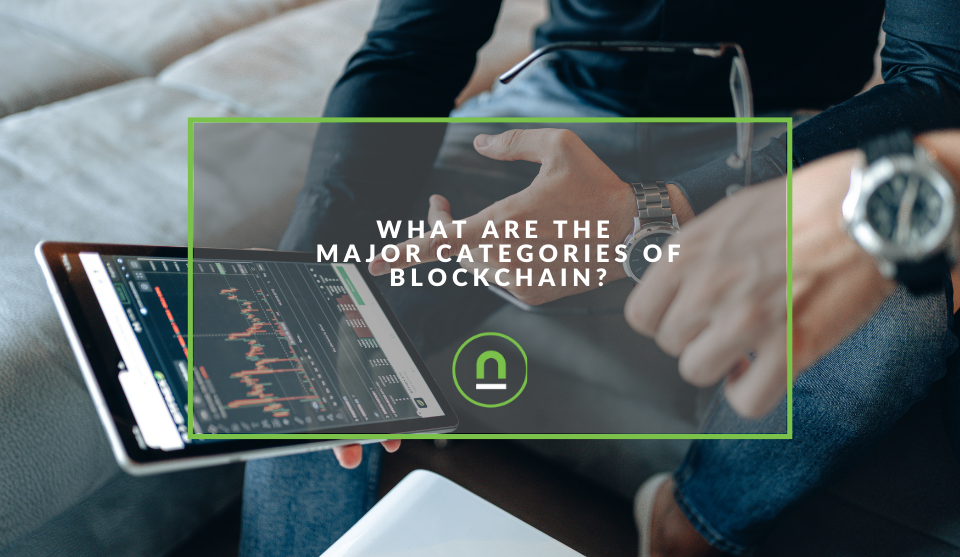Recent posts

Industry Experts
A Comprehensive Guide to Flyer Design: Digital & Physical Distribution
26 December 2024

Money Talks
Why Is There A Surge in Bitcoin Adoption in South Africa
24 December 2024

Money Talks
How To Safely Open Forex Trading Accounts in 2024
18 December 2024

Mind, Body & Soul
Understanding Cannabis in Modern Wellness
12 December 2024
Popular posts
Extravaganza
Trending Music Hashtags To Get Your Posts Noticed
24 August 2018
Geek Chic
How To Fix iPhone/iPad Only Charging In Certain Positions
05 July 2020
Extravaganza
Trending Wedding Hashtags To Get Your Posts Noticed
18 September 2018
Money Talks
How To Find Coupons & Vouchers Online In South Africa
28 March 2019
What Are The Major Categories of Blockchain?
22 June 2022 | 0 comments | Posted by Claire Wouters in Money Talks
Over 13,000 assets are listed on Coinmarketcap, the most popular website for tracking the price of blockchain assets. As new blockchain projects emerge daily, the list continues to grow. However, non-fungible tokens (NFTs) and decentralised apps (DApps) are not included on the coinmarketcap list. As a result, the figure is likely to be higher than we realise.
As a result, it is correct to say that blockchain assets are distinct, and each has a distinct value to the end-user. However, the sheer number of blockchain assets makes it difficult to tell which one does what.
Classifying blockchain assets facilitates this process. These classifications are according to the function they perform and their way of creation. The cryptocurrency category was the first to emerge as a major blockchain category. Coins in this category include Bitcoin, Ethereum, Dogecoin, and many others.
You are now aware of blockchain as a result of the development of Bitcoin. Furthermore, due to Bitcoin, many other developers began creating other types of digital assets.
Aside from NFTs, altcoins refer to all digital assets created immediately after Bitcoin. Alternative coins are referred to as altcoins. However, keep in mind that these digital assets function similarly to bitcoin.
Blockchain has six main categories, and they are:
1. Cryptocurrencies
Cryptocurrencies are the most widely used blockchain assets. The term cryptocurrency refers to the fact that these digital currencies are protected by cryptography.
In short, the main reason for creating digital currencies is to serve a similar purpose to money.
The primary purpose of cryptocurrency, like any fiat currency, is to serve as a unit of account, store value, and medium of exchange. In most cases, the term cryptocurrency refers not only to crypto coins but also to other blockchain assets. This, however, should not be the case. Bitcoin, Monero, Dash, Bitcoin Cash, ZCash, and Litecoin are examples of blockchain assets.
Because of the widespread adoption of cryptocurrency, you can now use these blockchain assets to make purchases. You can get a crypto debit card like Club Swan to make crypto transactions more convenient.
Also, you can buy from millions of merchants online and in-store using crypto debit cards.
2. Stablecoins
Stablecoins can be considered cryptocurrencies at some point. However, the main difference between these two digital assets is the problems they solve. The main reason that most merchants do not accept cryptocurrencies as payment is their high volatility. It would be very disappointing for a merchant to sell goods for the cryptocurrency to lose value later.
On the other hand, those who accept cryptocurrency must settle their costs in fiat currency. As a result, to make fiat settlements, these merchants must sell their ZCash, Monero, Bitcoin, or Litecoin. In exchange, they receive their preferred currency, which they use to pay their utility bills.
Stablecoins can help you avoid this hassle and the worry about crypto volatility. Stablecoins are digital assets that are backed by physical assets. Because of this backing, the stablecoin's price is tied to the price of the underlying digital assets. The US dollar is frequently used as the backing asset for most stablecoins.
You can avoid the effect of volatile cryptocurrency prices by using stablecoins. Stablecoins include DAI, Tether (USDT), True USD (TUSD), USD Coin (USDC), and Paxos Standard (PAX).
3. Security tokens
In 2013, the developers behind the Mastercoin blockchain project held their first crowd sale. Following the successful launch, the developers promised native tokens to the financial supporters of their blockchain network.
Following a successful launch, Vitalik Buterin and his team began work on the Ethereum blockchain. The company mined and sold 60 million Ethereum tokens to its investors. At the same time, it raised over 31,000 Bitcoins worth approximately $ 18 million. Following this, Ethereum evolved into a platform that assists blockchain startups by mining tokens and selling them for capital.
Due to regulatory pressures, these companies that sell tokens to raise capital have been formed in accordance with the existing regulations. As a result, some of the issued tokens have been converted to security. Creating tokens on the blockchain and selling them as investment instruments is known as STO (Security token offering).
4. Decentralised applications
The blockchain serves a variety of purposes. It can be used as a backend for downloadable apps and a platform for creating and managing tokens and cryptocurrencies. Unlike server backends, blockchain provides a better and improved user experience, security, and privacy. DApps (Decentralised applications) are applications that can run on a blockchain. DeFi (Decentralized Finance) apps are any decentralised apps that provide financial services.
Here are some examples of DeFi.
Decentralised leading platforms. They include DyDx and Compound Finance. Decentralised exchanges. For example, Pancakeswap and Uniswap. Decentralised insurance platforms. For instance, Nexus Mutual.
5. Non-Fungible Tokens (NFTs)
Cryptocurrencies and utility tokens are fungible. This means that replacing one unit is remarkably simple. Non-Fungible tokens exist alongside fungible tokens. These are blockchain tokens that are distinct from others.
An NFT can take any form. NFTs that have been identified so far include video game skins, photos, and memes. A tokenised share is a good example of an NFT. Since one share cannot get replaced by another, this is similar to an NFT. This is due to details such as the value and the holder's name.
Platforms for creating and managing NFTs include Rarible, OpenSea, and SupreRare.
6. Utility tokens
These are blockchain assets that are comparable to stablecoins and cryptocurrencies. The main distinction is the function they serve and how they are used. Utility tokens, unlike cryptocurrencies that serve a similar purpose as money, serve a specific function on a single platform.
A utility token typically grants the holder access to a service on the blockchain or a specific application. These tokens function similarly to casino chips. These chips are valuable and can be accepted at specific locations.
Certain coins can be used as utility tokens. Consider the Stori coin, which can only get used on the Stori network. On the Stori network, you can use the con to settle computer storage transactions between buyers and sellers. On the other hand, some coins are classified as crypto but function as utility tokens. The Ethereum blockchain native coin, ETH, is a good example.
You can use ETH in the same way that you would use Bitcoin. However, when it comes to the Ethereum blockchain, ETH becomes essential. As a result, it is a utility token. Those who run applications on the Ethereum blockchain must use ETH as 'gas.'
The Ethereum blockchain, unlike the Bitcoin blockchain, does more than just process payments. The Ethereum blockchain also serves as a virtual machine for businesses and developers. Enterprises and developers can use this platform to create and run smart contracts and applications. However, you must have ETH to run applications and smart contracts on the Ethereum blockchain. You can pay the required transaction fees with ETH coins.
Binance Chain (BNB), TRON (TRX), Cardano (ADA), and Polkadot (DOT) are other blockchains that function similarly to Ethereum (ETH).
Conclusion
Although blockchain is still in its early stages, it has grown rapidly. We have six types of blockchain assets as a result of blockchain. As blockchain technology evolves, there is a good chance that new solutions will emerge.
Contact us
If you would like to know more about digital assets or would like to market your digital asset company or how to set it up for your business, then don’t be shy we’re happy to assist. Simply contact us
Are you looking to promote your business?
South African finance business owners can create your free business listing on nichemarket. The more information you provide about your business, the easier it will be for your customers to find you online. Registering with nichemarket is easy; all you will need to do is head over to our sign-up form and follow the instructions.
If you require a more detailed guide on how to create your profile or your listing, then we highly recommend you check out the following articles.
Recommended reading
If you enjoyed this post and have a little extra time to dive deeper down the rabbit hole, why not check out the following posts on cryptocurrency and blockchain.
- Why Blockchain and Cryptocurrency Is The Future Of Money
- 24 Ways To Earn Cryptocurrency
- How To Pay Tax On Cryptocurrency In South Africa
- How To Buy Bitcoin In South Africa
- Why Does Your Bitcoin Wallet Address Keep Changing?
Disclaimer: This article should not be taken as, and is not intended to provide any investment advice and is for educational purposes only. As of the time posting the writers may or may not have holdings in some of the coins or tokens they cover. Please conduct your own thorough research before investing in any cryptocurrency as all investments contain risk.
You might also like
How AI Search Engines Will Monetise
09 December 2024
Posted by Che Kohler in nichemarket Advice
An early look into how LLM-powered search engines need to monetise and drive revenue if they plan to stick around when AI-investing by VCs start to d...
Read moreWhy Is There A Surge in Bitcoin Adoption in South Africa
24 December 2024
Posted by Josh Welman in Money Talks
A look at the growing demand for Bitcoin in South Africa, why the country's citizens have taken a liking to the asset class and what tailwinds are pu...
Read more{{comment.sUserName}}
{{comment.iDayLastEdit}} day ago
{{comment.iDayLastEdit}} days ago
 {{blogcategory.sCategoryName}}
{{blogcategory.sCategoryName}}

